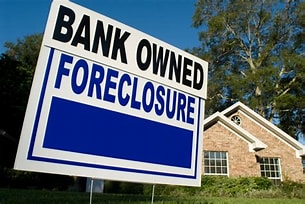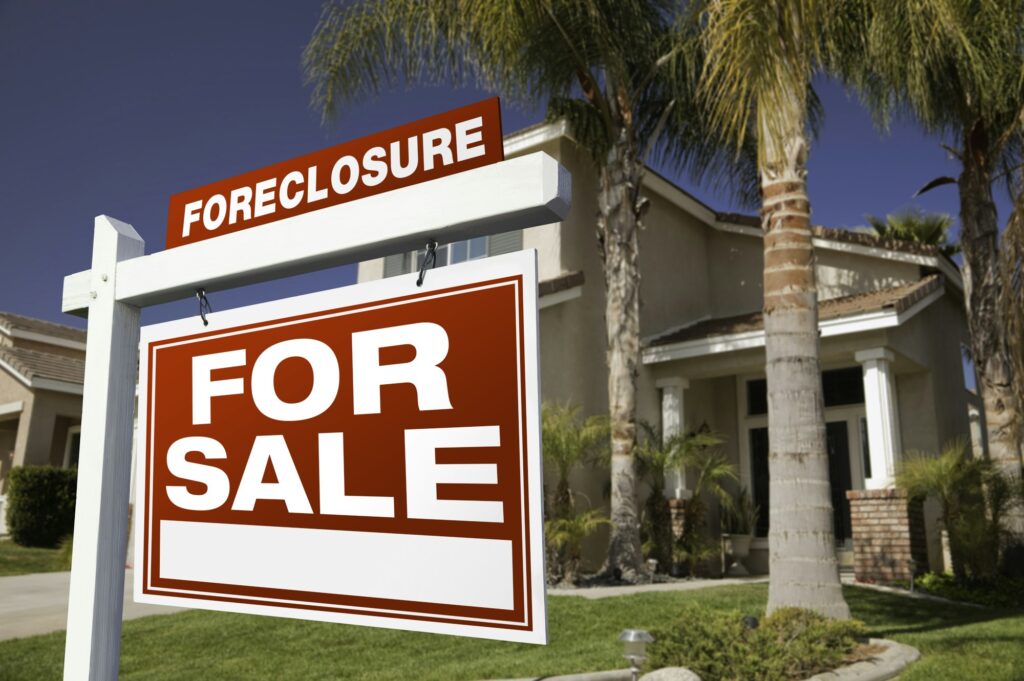Understanding Home Foreclosure
To effectively navigate the complexities of home foreclosure, it is essential to gain a comprehensive understanding of the process. This section will explore what home foreclosure entails and the common causes that lead to it.
What is Home Foreclosure?
Home foreclosure refers to a legal process through which a lender takes possession of a property due to the borrower’s failure to meet the mortgage obligations. In simpler terms, it is the process by which a homeowner loses their property to the lender because they have defaulted on their mortgage payments.
Foreclosure typically begins when a homeowner falls significantly behind on mortgage payments, leading the lender to initiate legal proceedings to reclaim the property. The specific foreclosure process can vary depending on the state and the terms outlined in the mortgage agreement.
Causes of Home Foreclosure
The number one reason for foreclosure is the inability to pay the mortgage. This is often due to circumstances such as unemployment, unexpected medical expenses, excessive debt, or other financial hardships (HowStuffWorks). The inability to keep up with mortgage payments can quickly escalate into a foreclosure situation if not addressed promptly.
It is important to note that foreclosure rates have been steadily declining since 2010, but they still remain a significant issue in the United States. Therefore, understanding the causes of foreclosure is crucial in taking proactive steps to prevent it.
By identifying the warning signs and seeking early intervention, homeowners can explore various options such as loan modifications, refinancing, or even selling the property before foreclosure becomes inevitable. Acting quickly when financial difficulties arise is key to preventing foreclosure and protecting one’s financial security (HowStuffWorks).
To delve deeper into the strategies and options available for foreclosure avoidance, consider reading our articles on foreclosure vs. foreclosure avoidance: exploring your options and creating a foreclosure avoidance plan. These resources provide valuable insights into the steps you can take to prevent foreclosure and regain financial stability.
Remember, seeking professional help from housing counselors or foreclosure prevention services can significantly increase your chances of saving your home from foreclosure (HowStuffWorks). The sooner you act and educate yourself on the foreclosure process, the better equipped you will be to navigate this challenging situation and secure your financial future.
The Importance of Early Intervention
When it comes to preventing foreclosure, early intervention is key. Recognizing the early warning signs of foreclosure and taking action can make a significant difference in your ability to save your home. In this section, we will explore the early warning signs of foreclosure and the benefits of early intervention.
Early Warning Signs of Foreclosure
Being aware of the early warning signs of foreclosure can help you take prompt action to prevent it. Some common signs include:
- Missed or Partial Payments: Falling behind on mortgage payments is a clear indication that you may be at risk of foreclosure. The more missed or partial payments a borrower has, the harder it becomes to avoid foreclosure (Regulation Room).
- Multiple Payment Reminders: Receiving frequent payment reminders or notices from your lender can be a sign that your mortgage is delinquent.
- Increased Debt and Financial Struggles: If you find yourself accumulating more debt or facing financial difficulties that make it challenging to cover your mortgage payments, it’s crucial to address these issues promptly.
- Unemployment or Reduced Income: Job loss or a significant reduction in income can make it difficult to meet your financial obligations, including your mortgage payments.
- Notice of Default: A notice of default is a formal notification from the lender indicating that you have fallen behind on your mortgage payments and are at risk of foreclosure.
Recognizing these warning signs early on allows you to take proactive steps to address your financial situation and prevent foreclosure. For a deeper understanding of your options when facing foreclosure, you can explore the article on foreclosure vs. foreclosure avoidance: exploring your options.
Benefits of Early Intervention
Engaging in early intervention to prevent foreclosure offers several significant benefits. These include:
- Increased Likelihood of Successful Resolution: The earlier you seek assistance or mediation, the more likely you are to avoid foreclosure altogether or find a favorable resolution. Taking action at the first signs of trouble can provide more opportunities to explore alternative solutions to foreclosure.
- Additional Time to Assess Financial Situation: Early intervention allows you ample time to assess your financial situation, identify the root causes of your mortgage delinquency, and develop a plan to address them. This may involve creating a foreclosure avoidance plan tailored to your specific needs.
- Access to Foreclosure Prevention Programs: Many organizations and government entities offer foreclosure prevention programs that provide financial assistance, loan modifications, or mediation services. By intervening early, you can take advantage of these programs and resources to help you navigate the foreclosure process.
- Preservation of Credit Score: Foreclosure can have a significant negative impact on your credit score. By intervening early and finding a solution to avoid foreclosure, you can minimize the damage to your credit history.
- Stabilization of Communities: Early intervention in foreclosure cases can help prevent unnecessary loss of homes and stabilize communities. By addressing the underlying issues at the earliest stage possible, you contribute to maintaining a healthy and stable neighborhood.
The importance of early intervention cannot be overstated when it comes to preventing foreclosure. By recognizing the warning signs and taking prompt action, you can increase your chances of finding a favorable resolution and preserving your home. Remember, seeking professional assistance and reaching out to your lender are essential steps in the early intervention process.
Preventing Foreclosure through Communication
When it comes to preventing foreclosure, effective communication plays a crucial role in identifying and addressing potential issues in a timely manner. This section will explore the role of servicers in early intervention and the importance of contacting borrowers in trouble.
The Role of Servicers in Early Intervention
Servicers, who are responsible for collecting mortgage payments and managing loan accounts, play a vital role in early intervention to prevent foreclosure. It is in their best interest to work with borrowers to find alternative solutions and avoid the costly foreclosure process.
To fulfill their role effectively, servicers are required to adhere to specific guidelines. According to Regulation Room, servicers must try to make a “live contact” with the borrower within 30 days of when the payment was due. This contact can be in person or by phone, and it allows servicers to understand the borrower’s financial situation and explore possible options to avoid foreclosure.
Additionally, within 40 days of when the payment was due, servicers must send a written notice to the borrower containing detailed information about the situation and potential remedies. This written notice provides borrowers with important information and ensures transparency in the process. However, it’s important to note that servicers are only required to send this notice every 180 days (6 months), while live contact should be attempted each time there is a missed or partial payment (Regulation Room).
Contacting Borrowers in Trouble
Contacting borrowers in trouble is a critical step in preventing foreclosure. Early intervention is key because the more missed or partial payments a borrower has, the harder it becomes to avoid foreclosure (Regulation Room). By reaching out to borrowers as soon as possible, servicers can assess the borrower’s financial situation, discuss available options, and provide guidance on how to proceed.
Establishing contact with borrowers allows servicers to explore potential solutions, such as loan modification, forbearance, or repayment plans. It also offers an opportunity to address any concerns or challenges the borrower may be facing and provide resources for financial counseling or assistance programs.
Being proactive in contacting borrowers in trouble not only helps to identify potential solutions but also demonstrates the servicer’s commitment to assisting borrowers in navigating their financial difficulties. This communication can provide borrowers with a sense of support and reassurance during a challenging time.
By understanding the role of servicers in early intervention and the importance of contacting borrowers in trouble, homeowners facing financial difficulties can take the necessary steps to prevent foreclosure. Open and transparent communication between borrowers and servicers is crucial in exploring alternatives, finding solutions, and ultimately achieving financial stability. To learn more about foreclosure avoidance and creating a comprehensive plan, check out our article on creating a foreclosure avoidance plan.
Exploring Foreclosure Prevention Programs
When facing the possibility of foreclosure, it’s crucial to be aware of the various foreclosure prevention programs available. These programs aim to assist homeowners in avoiding foreclosure and finding viable solutions to their financial difficulties. In this section, we will explore three key foreclosure prevention programs: mediation programs, financial assistance programs, and loan modification options.
Mediation Programs
Mediation programs have shown effectiveness in resolving foreclosure cases and helping families stay in their homes. These programs provide a forum for homeowners and lenders to engage in facilitated negotiations with the goal of finding mutually agreeable alternatives to foreclosure. Mediators, who are neutral third parties, help facilitate communication and guide the parties towards finding a resolution.
The benefits of mediation programs include the opportunity for homeowners and lenders to discuss foreclosure alternatives, such as loan modifications or repayment plans. The process allows for open dialogue and exploration of potential solutions, increasing the chances of reaching an agreement that avoids foreclosure.
Financial Assistance Programs
Financial assistance programs can provide critical support to homeowners facing financial hardship. These programs offer various forms of financial aid, such as grants, loans, or subsidies, to help homeowners cover mortgage payments and stay in their homes. Seeking professional help from housing counselors or foreclosure prevention services can significantly increase the chances of saving a home from foreclosure (HowStuffWorks).
Financial assistance programs may have specific eligibility criteria, so it’s important to research and understand the requirements before applying. These programs can provide temporary relief and stability during challenging times, helping homeowners regain their financial footing and prevent foreclosure.
Loan Modification Options
Loan modification is another foreclosure prevention strategy that involves modifying the terms of an existing mortgage to make it more affordable and manageable. Loan modifications can take various forms, such as reducing the interest rate, extending the loan term, or forgiving a portion of the principal balance. The goal is to create a new payment plan that aligns with the homeowner’s financial situation and makes it easier to meet their mortgage obligations.
The specific options for loan modification may vary depending on the lender and the homeowner’s circumstances. It’s essential to work closely with the lender or seek assistance from a housing counselor to explore the available loan modification options. Repayment plans, another option for homeowners facing financial hardship, involve spreading out missed mortgage payments over a specified period to catch up on arrears while maintaining regular mortgage payments.
Exploring these foreclosure prevention programs can provide homeowners with alternatives to foreclosure and potentially help them overcome financial challenges. It’s crucial to assess your specific situation and consider seeking professional advice to determine the most suitable program or combination of programs to address your needs. For more information on creating a comprehensive foreclosure avoidance plan, check out our article on creating a foreclosure avoidance plan. Remember, early intervention and proactive measures are key to preventing foreclosure and securing your financial future.
Strategies for Avoiding Foreclosure
When faced with the threat of foreclosure, it’s crucial to explore strategies that can help you navigate this challenging situation. By taking proactive steps, you can increase the likelihood of avoiding foreclosure and maintaining your financial stability. Here are three effective strategies to consider:
Assessing Your Financial Situation
Assessing your financial situation is a critical first step in preventing foreclosure. By understanding your financial standing, you can develop a clear picture of your income, expenses, and debts. This assessment allows you to identify areas where you can make adjustments and allocate resources effectively. Creating a budget that reflects your priorities is key to taking control of your finances and making informed financial decisions.
Consider consulting a housing counselor or financial professional who can provide guidance and advice on budgeting, saving, and navigating the mortgage application process. These professionals can help you develop a foreclosure avoidance plan tailored to your specific circumstances. Seeking their expertise can be instrumental in achieving financial stability and avoiding foreclosure.
Negotiating with Your Lender
Negotiating with your lender is a viable solution that can help you avoid repossession. Open communication and transparency are crucial during this process. Explain your financial situation to your lender and explore potential options for modifying your loan or establishing a payment plan that aligns with your current capabilities.
By demonstrating a genuine commitment to resolving the situation, you may be able to negotiate more favorable terms that can help you avoid foreclosure. Keep in mind that lenders have a vested interest in helping borrowers stay in their homes, so they may be willing to work with you to find a mutually beneficial solution.
Seeking Professional Assistance
Seeking professional help from housing counselors or foreclosure prevention services can significantly increase your chances of saving your home from foreclosure. These professionals specialize in providing guidance and support throughout the foreclosure prevention process. They have the knowledge and experience to navigate complex financial situations and negotiate with lenders on your behalf.
When seeking professional assistance, ensure that you work with reputable and certified professionals who have a proven track record of helping homeowners avoid foreclosure. Their expertise can provide you with valuable insights and strategies tailored to your unique circumstances. Collaborating with professionals who understand the intricacies of the foreclosure process can make a significant difference in your ability to protect your home (HowStuffWorks).
By implementing these strategies, you can take proactive steps towards foreclosure avoidance. Remember, early intervention is key to preventing foreclosure, so don’t delay in seeking assistance and exploring your options. Through careful assessment of your financial situation, open communication with your lender, and professional guidance, you can increase your chances of overcoming financial difficulties and maintaining your home. For more information on foreclosure and foreclosure avoidance, visit our article on foreclosure vs. foreclosure avoidance: exploring your options.
Effective Foreclosure Management Techniques
When it comes to managing foreclosures, employing effective techniques is essential to minimize losses, stabilize communities, and maximize returns for investors. In this section, we will explore three key techniques for effective foreclosure management: streamlining the foreclosure process, utilizing technology, and collaboration with real estate professionals.
Streamlining the Foreclosure Process
Streamlining the foreclosure process can lead to more efficient and effective management of foreclosures. Techniques for streamlining include standardizing documentation, utilizing technology, offering alternative solutions, and improving communication between lenders, borrowers, and other parties involved in the foreclosure process.
By standardizing documentation requirements and procedures, lenders can reduce confusion and delays in the foreclosure process. This allows for a smoother transition from delinquency to foreclosure, ensuring that necessary steps are taken promptly. Implementing automated workflows and digital document management systems can further expedite the process, allowing for efficient tracking and management of foreclosure cases.
Utilizing Technology in Foreclosure Management
Utilizing technology can significantly enhance foreclosure management. Digital advancements provide opportunities for faster resolution times, improved communication, and better tracking of important data. For example, implementing digital document management systems allows for easy access to relevant documents, reducing the risk of misplaced paperwork and streamlining communication between lenders, borrowers, and legal professionals.
Automation of workflows can also expedite various steps in the foreclosure process, such as document review and scheduling. Online portals for clients can enhance transparency and provide borrowers with real-time updates on the status of their foreclosure cases. Data analytics can be utilized to identify trends, predict outcomes, and make informed decisions in foreclosure management.
Collaboration with Real Estate Professionals
Collaboration with local real estate professionals is another effective technique in foreclosure management. By working closely with real estate agents, brokers, and appraisers, lenders can leverage their market knowledge, networks of buyers and investors, and expertise in marketing and selling foreclosed properties. This collaboration can help minimize losses, maximize returns, and expedite property disposition.
Real estate professionals can assist in assessing property values, identifying potential buyers or investors, and developing marketing strategies tailored to the local market. Their expertise can prove invaluable in attracting qualified buyers and securing timely sales. By collaborating with experienced professionals in the real estate industry, lenders can navigate the complexities of property disposition more effectively.
By implementing these effective foreclosure management techniques, stakeholders can work together to minimize losses, expedite property disposition, and stabilize communities impacted by foreclosures. Streamlining the foreclosure process, embracing technology, and collaborating with real estate professionals play significant roles in ensuring efficient and successful foreclosure management.








